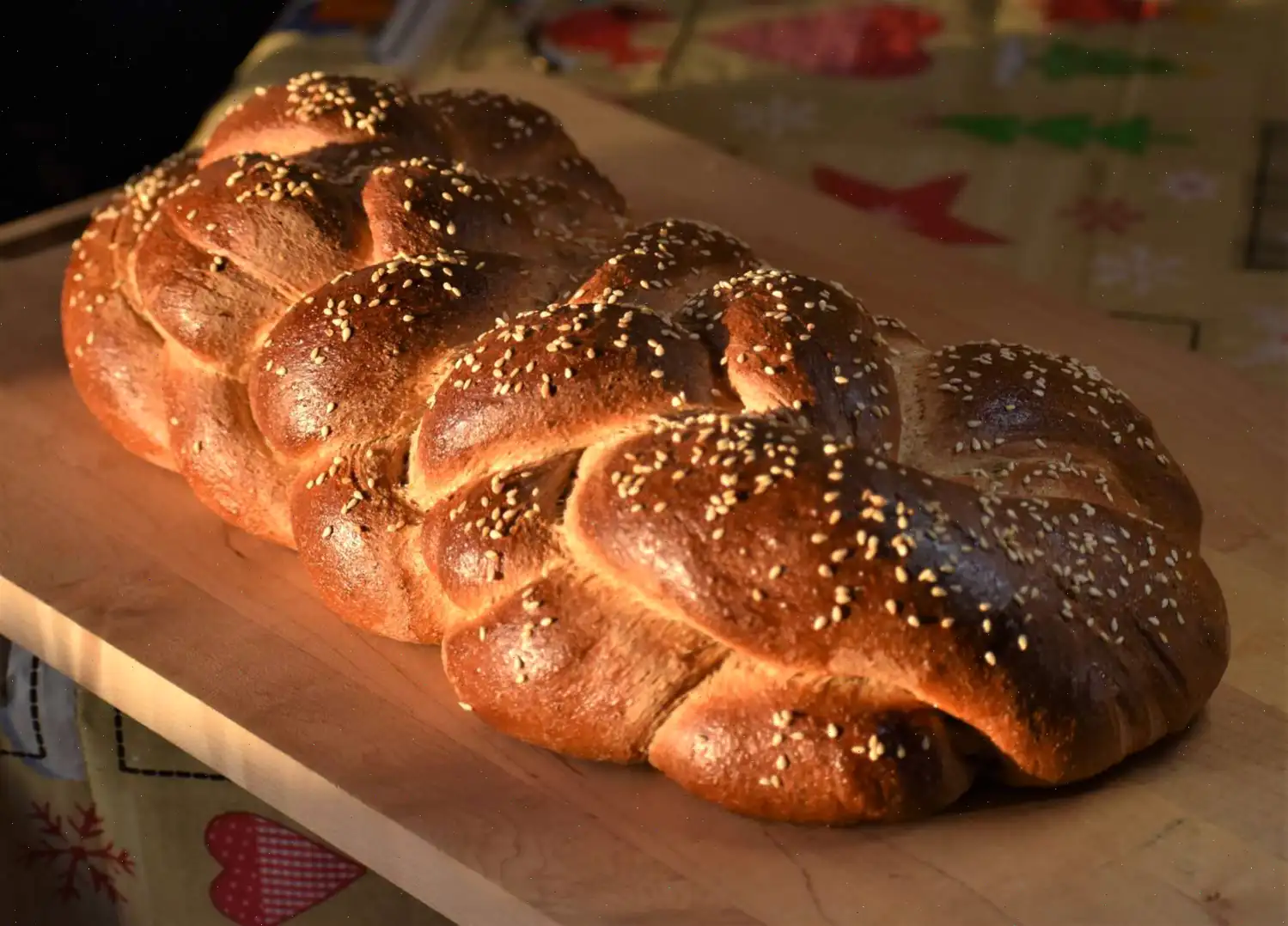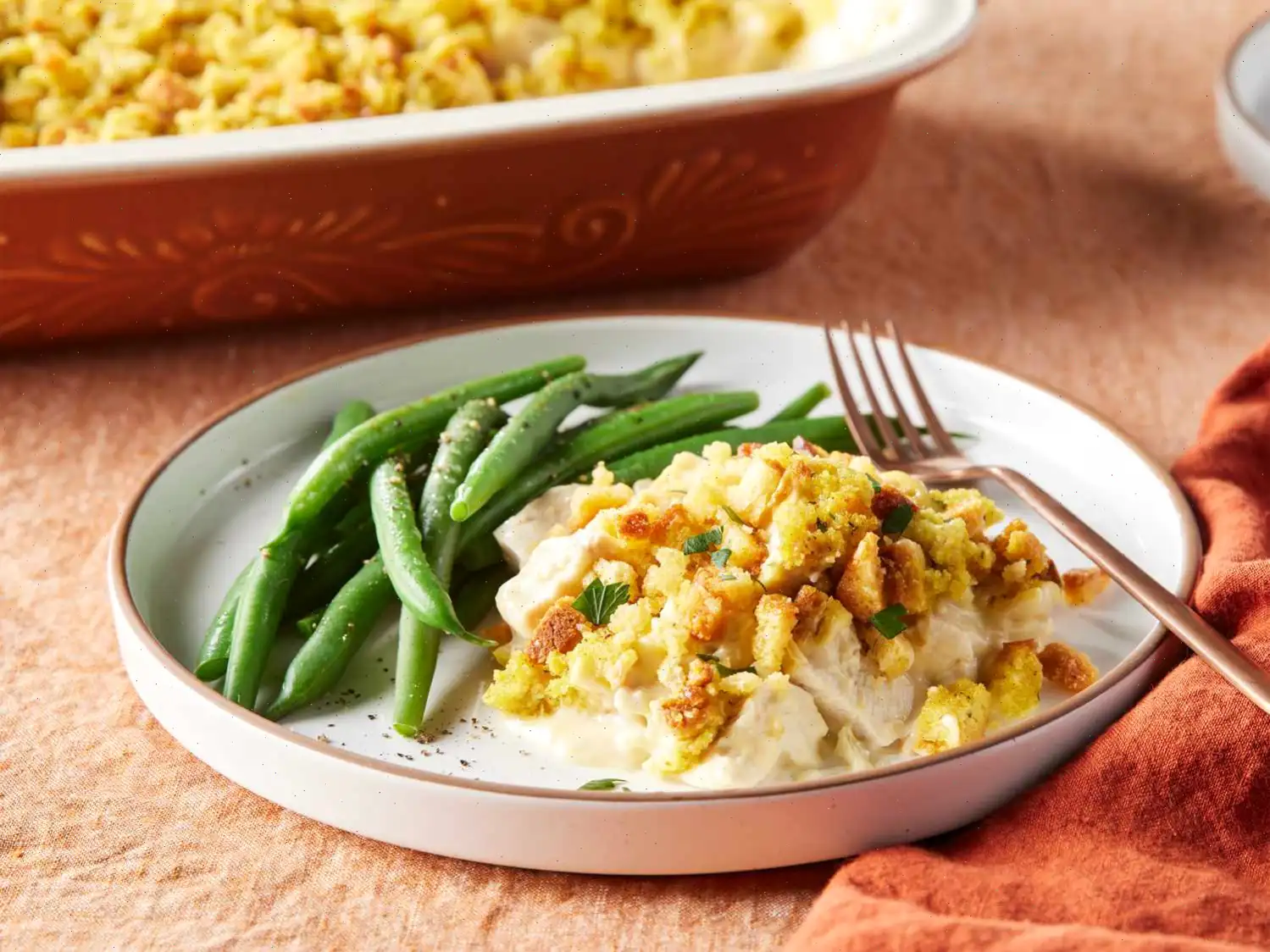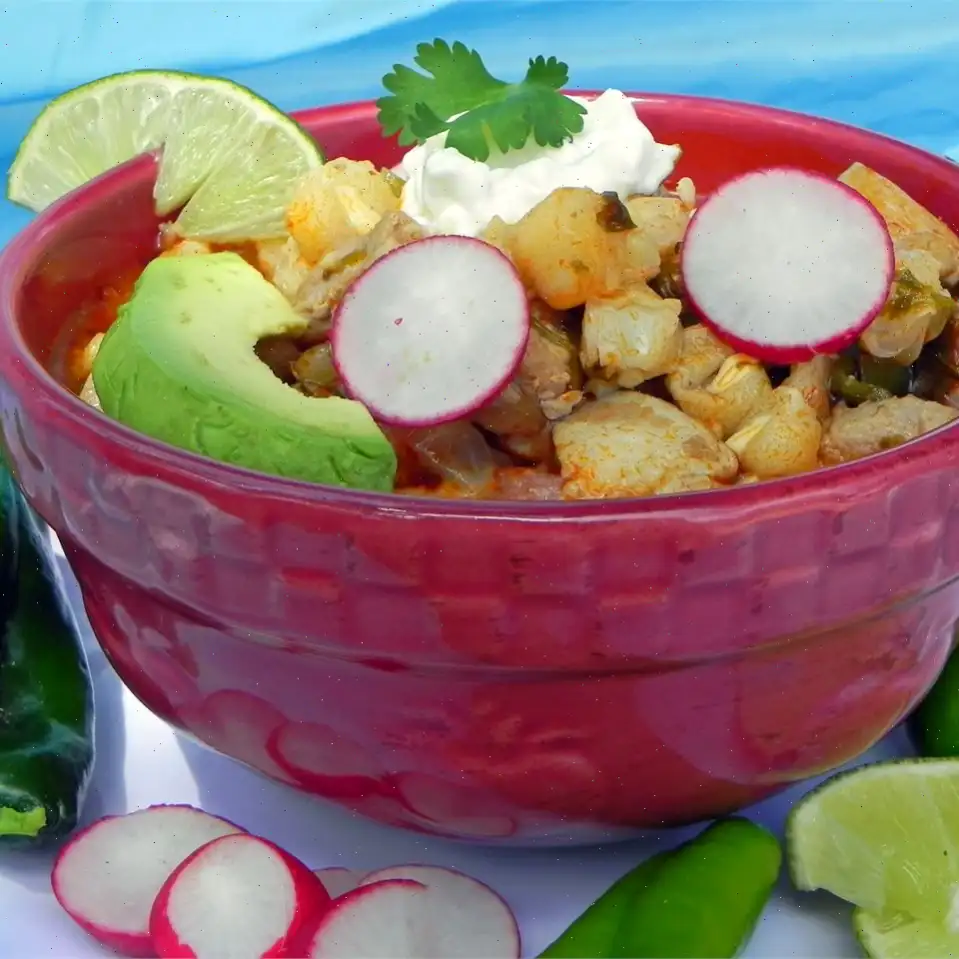
Honey Whole Wheat Challah Recipe
Ingredients
- 3 cups bread flour, or more as needed, divided
- 2 1 cups warm water (110F/45C)
- 2 teaspoons active dry yeast
- 4 eggs, divided
- cup vegetable oil
- cup honey, or more to taste
- 2 teaspoons salt
- 3 cups whole wheat flour, or more if needed
- 1 teaspoon water
- cup sesame seeds
Directions
Step 1: In a large bowl, combine 1 cup of bread flour, 2 1 cups of warm water, and active dry yeast. Stir to form a thin batter and let it sit for about 10 minutes until frothy bubbles appear on the surface.
Step 2: Add 3 eggs, vegetable oil, honey, and salt to the mixture, stirring until everything is well combined.
Step 3: Gradually add whole wheat flour and the remaining 2 cups of bread flour, alternating between them. Stir until the dough becomes too stiff to mix with a spoon.
Step 4: Transfer the dough onto a floured surface and knead for about 10 minutes, until it becomes smooth and elastic. If needed, add more flour to prevent stickiness, but the dough should remain slightly sticky.
Step 5: Shape the dough into a round ball and place it into a large, lightly oiled bowl. Turn the dough around a few times to coat its surface with oil. Cover the bowl with a plastic bag and allow the dough to rise in a warm, draft-free spot until doubled in size, about 1 to 2 hours.
Step 6: Punch down the dough and knead a few times to release air bubbles. Divide the dough into 3 equal portions. Set aside two portions, covering them with a cloth to prevent drying out.
Step 7: Take the remaining piece of dough and divide it into 3 equal parts. Roll each part into a rope about the thickness of your thumb and around 12 inches long. The ropes should be fatter in the middle and thinner at the ends.
Step 8: Pinch the three ropes together at one end. Start braiding by moving the rightmost strand over the middle strand. The middle strand then becomes the new rightmost strand. Repeat the process by moving the leftmost strand over the middle. Continue braiding until the loaf is complete. Pinch the ends together and fold them under to give the loaf a neat finish.
Step 9: Repeat steps 7 and 8 with the remaining two portions of dough.
Step 10: Place the braided loaves on a baking sheet lined with parchment paper. Let them rise until doubled in size, about 45 to 60 minutes.
Step 11: Preheat your oven to 350F (175C). In a small bowl, beat the remaining egg with 1 teaspoon of water. Brush this egg wash over the top of the loaves and sprinkle with sesame seeds.
Step 12: Bake the loaves in the preheated oven for about 40 minutes, or until the tops are a deep golden brown and the loaves sound hollow when tapped on the bottom.
Step 13: Allow the loaves to cool on a wire rack before slicing and serving.
Cook's Note
If you'd like to slow down the rising process, for example, if you make the dough the night before but want to bake it the following day, place the dough in the refrigerator after forming it into a ball. This will slow down the yeast's activity. You can leave the dough on the counter during the day, and it should be ready for the next step by late afternoon or early evening.
Nutrition Facts (per serving)
- Calories: 206
- Total Fat: 7g (9% Daily Value)
- Saturated Fat: 1g (6% Daily Value)
- Cholesterol: 41mg (14% Daily Value)
- Sodium: 277mg (12% Daily Value)
- Total Carbohydrate: 32g (11% Daily Value)
- Dietary Fiber: 3g (11% Daily Value)
- Total Sugars: 5g
- Protein: 7g (13% Daily Value)
- Calcium: 36mg (3% Daily Value)
- Iron: 2mg (11% Daily Value)
- Potassium: 133mg (3% Daily Value)
*Percent Daily Values are based on a 2,000 calorie diet. Your daily values may be higher or lower depending on your calorie needs.

Recipe by: Bobbie Kramer
Origin and History of Challah
Challah is a traditional Jewish bread, typically eaten on Shabbat and Jewish holidays. It has its roots in Ashkenazi Jewish communities, with its origins dating back to the Middle Ages in Eastern Europe. Originally, challah was baked as a sweet bread, rich in eggs, honey, and oil, symbolizing the sweetness of life. Over time, the bread has evolved in many regions, with some variations incorporating whole wheat flour, like in this honey whole wheat challah recipe.
Regional Variations
The challah recipe varies across Jewish communities around the world. In the United States, for example, it is common to find challah that is soft and sweet, made with white flour. However, in Israel, a more rustic version may incorporate whole wheat flour, as in this recipe, creating a denser, earthier flavor. Similarly, some families add raisins or other fruits to their challah for added sweetness, while others prefer a more savory version, omitting sugar altogether.
How This Challah Differs from Other Similar Breads
While challah may resemble other sweet, yeasted breads, such as brioche or babka, there are distinct differences. Challah typically does not contain dairy, making it a parve food, suitable for serving with either meat or dairy dishes. Additionally, its braided shape is a hallmark of challah, symbolizing unity. This honey whole wheat version distinguishes itself with the use of whole wheat flour, which lends the bread a hearty texture and nutty flavor that is not typically found in traditional white flour challah.
Where to Serve Honey Whole Wheat Challah
Honey whole wheat challah is often served on special occasions, particularly during Shabbat dinners, Jewish holidays like Rosh Hashanah, and festive meals. Its slightly sweet flavor pairs wonderfully with butter, jam, or honey. It also makes an excellent base for French toast or can be sliced for sandwiches. While traditionally found in Jewish homes and bakeries, many modern bakeries offer variations of challah as a more health-conscious option, like this whole wheat version, in response to growing dietary preferences.
Interesting Facts
- The braided shape of challah has deep symbolism in Jewish tradition, representing the intertwining of people, the community, and the connection to God.
- Challah is often associated with the concept of "lechem mishneh" (double bread), as two loaves are placed on the table during Shabbat meals to honor the manna that fell from heaven during the Exodus.
- Despite being a religious bread, challah has become popular worldwide and is now often found in many different variations, including whole wheat, gluten-free, and even vegan recipes.
- In Jewish tradition, it is customary to separate a small piece of dough (called "challah") before baking the bread as an offering to God, a practice dating back to biblical times.
Conclusion
Honey whole wheat challah is a perfect blend of tradition and nutrition, with its rich, hearty texture and slightly sweet flavor. Whether you're celebrating a Jewish holiday, enjoying a Shabbat meal, or simply looking for a delicious and wholesome bread, this recipe provides a healthier alternative to the classic challah. The whole wheat flour adds fiber and nutrients, while the honey lends a natural sweetness, making it a treat thats both satisfying and meaningful.
FAQ about Honey Whole Wheat Challah Recipe
Comments
Carol Lopez
11/12/2024 03:48:52 PM
I found this bread recipe to be straightforward to follow, with a flexible rising time, which was convenient. A helpful tip is to start braiding from the middle of the loaf and work outwards to achieve a better-looking shape. The only downside was that the bread turned out denser and heavier than expected due to the whole wheat flour used, but that was my oversight. Nonetheless, this recipe offers a lovely whole wheat bread option suitable for any dinner table. Thank you for sharing!
Jacob Miller
10/06/2022 07:17:04 AM
I found that I needed to incorporate a significant amount of bread flour and wheat flour towards the end to achieve the desired consistency, but the end result was fantastic. Instead of honey, I opted for agave sweetener. For my smaller loaf, I included approximately 1/4 cup of raisins, which added a nice touch.
Sharon Anderson
01/12/2023 03:47:16 AM
Amazing challah recipe! I followed a reviewer's advice and used agave, resulting in a perfect balance of light sweetness and ideal crumb texture. Utilizing my Kitchenaid mixer with both the paddle and dough hook made the whole process effortless. The dough turned out beautifully smooth after the first rise. I especially appreciate the tip to braid from the center, yielding three lovely and delicious loaves to enjoy on a cold winter day.
Amy Cruz
09/16/2022 04:36:54 PM
I usually struggle with making bread, but this recipe turned out surprisingly well. I had to add about 1 cup more of each flour, but that's just part of the process sometimes. I accidentally deflated one loaf while applying the egg wash, so be sure to take your time and apply it carefully.
Rachel Lewis
03/10/2023 06:07:47 AM
Absolutely scrumptious and nutritious as well! Wouldn't alter a single thing. Perfect for making delightful French toast and crunchy croutons, but believe me, it won't stick around for long. Appreciate you sharing this recipe!








